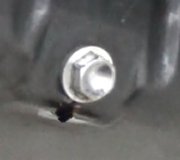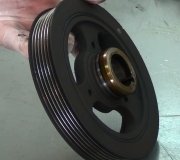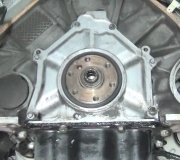For an oil leak that bad, start by looking at the sending unit for the dash gauge or warning light. Also remove the connector. If it's wet inside the connector, replace that unit. The oil pan gasket is another common source of an oil leak although the oil coming through there isn't under pressure so it will make a horrendous mess, but you typically won't lose a real lot of oil that quickly. Don't overlook a loose oil filter.
There's two other things you can do to locate the source of a leak. One is to use a smoke machine to inject a white, non-toxic smoke into the dip stick tube, then you watch for where it sneaks out. That doesn't work if the leak is from a pressurized point like an oil passage. It does work for oil drain back passages and valve cover gaskets.
The second method is to wash the engine with engine degreaser, then add a small bottle of dark purple dye to the oil. Search a little while later with a black light. The dye will show up as a bright yellow stain that you can follow back to the source. Auto parts stores will have the dye, and those that rent or borrow tools will usually have the black light.
For service manuals, nothing beats the manufacturer's stuff. You'll find a GM manual on eBay. It will be two or three times as thick as a Haynes manual and will cover a real lot more stuff. Haynes manuals only cover the basics for do-it-yourselfers, and they have nothing for electrical.
Vibrations during braking are caused by the rotors, never the pads or shoes. If the problem developed over time, the rotors are warped and need to be machined. There's entire text books written on doing a proper brake job, but to get you started on this problem, the easiest is to remove them and take them to a repair shop or auto parts store to be measured and machined. There is a published legal minimum thickness they can be machined to. If they have to be replaced, that's no big deal because new ones are very inexpensive. In fact, a lot of mechanics just replace them at every brake job because they're less expensive than the cost of running the brake lathe, and maintaining it.
If the problem started after someone did brake work, if you remove a rotor and look at the hub it sits on, you'll see three access holes for tools. One is larger and two are smaller. Water splashes through them and causes rust spots to form on the backside of the rotor. If the rotor is removed, then reinstalled in a different orientation, those rust spots will be wedged between the hub and rotor. That will make it wobble and cause a horrendous vibration during braking. Mechanics will clean those spots of rust off before they machine the rotors on the lathe, otherwise they will actually machine a warp into them.
If you want to measure the rotors yourself, you'll need a micrometer and a dial indicator. You use the micrometer to measure the thickness of the rotor in five to eight places around it. If you find it to be fatter in one spot and thinner in another, that's called "thickness variation", and will cause the brake pedal to move up and down once with each wheel rotation.
Next, you use the dial indicator to measure "lateral run out". The thickness variation can be acceptable, but if both plates of the rotor move left and right as you rotate them, that will make the caliper do that too. That will not make the brake pedal pulsate unless it's really bad, but it will make the wheel tug on the steering system once with each wheel rotation. You'll feel that in the steering wheel.
Using the micrometer is real easy, even if you don't know how to read it. Using the dial indicator requires the car to be supported solidly, and the base of the measuring tool must rest on something solid that won't move easily.
Engine misfires can get more involved and usually require consulting a mechanic. Those misfires can result in too much raw, unburned fuel going into the exhaust system where it will burn in the catalytic converter and overheat and destroy it. You might start with the common stuff like spark plugs and wires. Beyond that, a mechanic will perform a compression test, and he will connect a scanner to check the misfire monitors. All '96 and newer cars can detect which cylinder is misfiring but not why. A related diagnostic fault code will be set, and since it could adversely affect emissions, it will turn on the Check Engine light. If your light is not on, you may not have a misfire. Collapsed engine mounts can allow the two metal parts of the assembly to contact each other. That will transmit normal engine vibration into the body and passenger compartment.
Wednesday, June 25th, 2014 AT 4:20 PM



